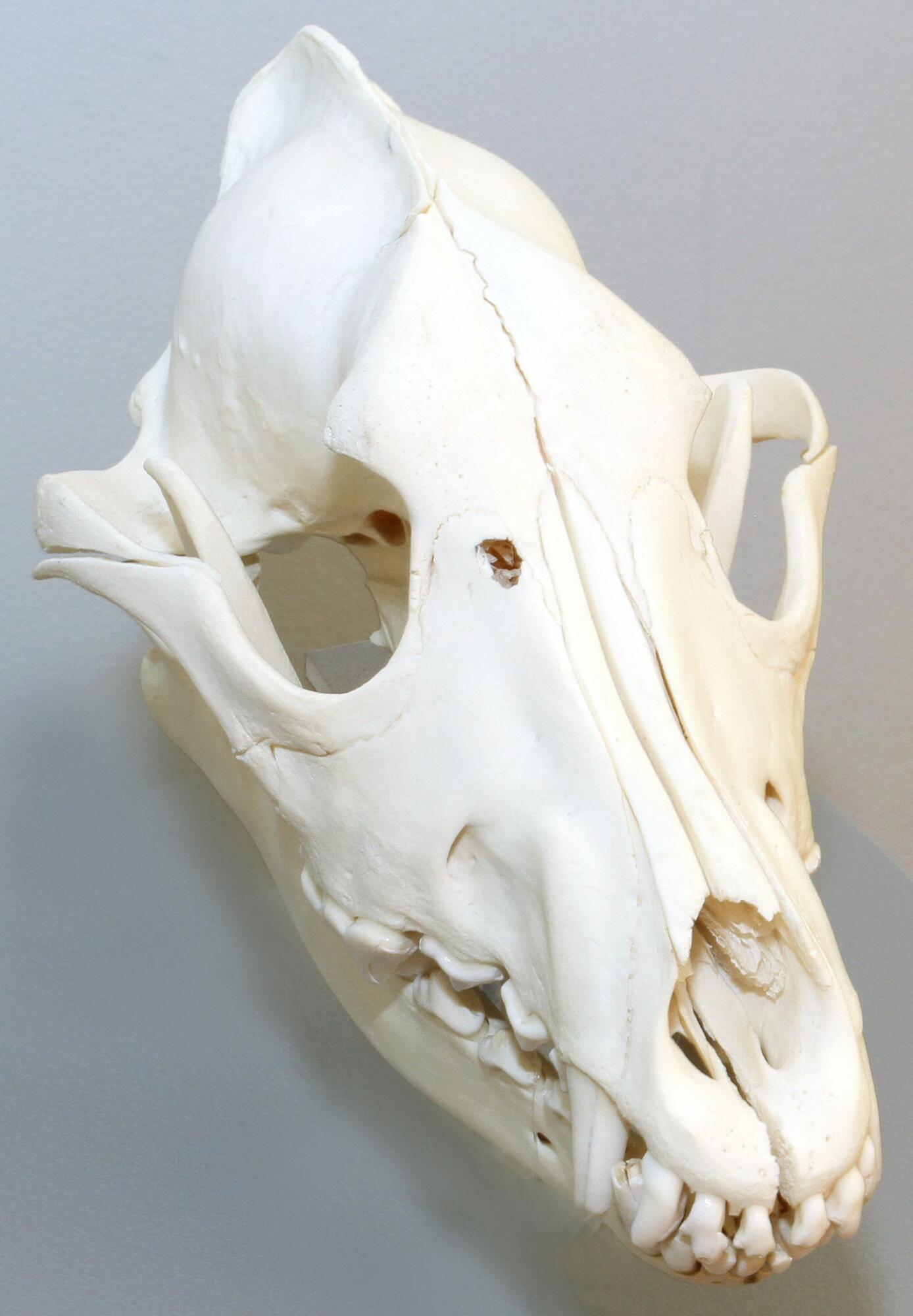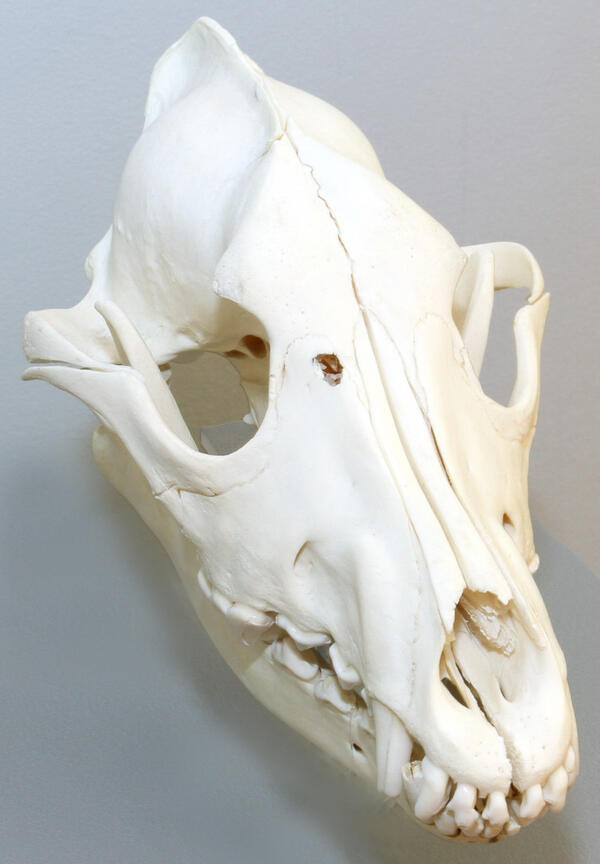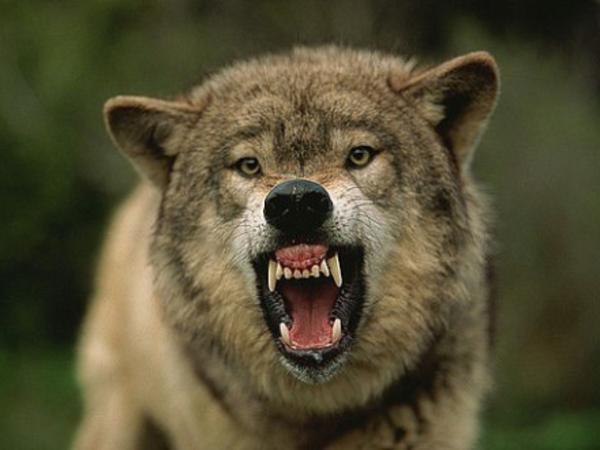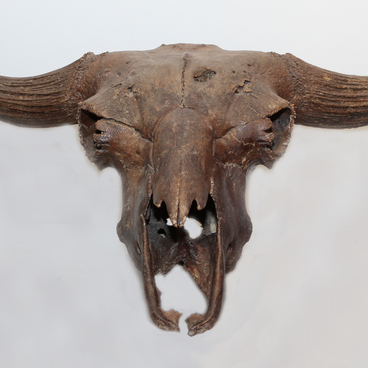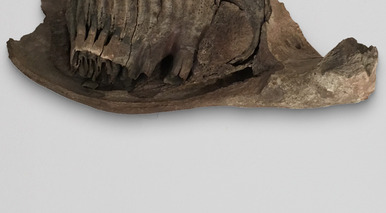The grey wolf, or timber wolf, is the direct ancestor of the domestic dog. Wolves live in the Northern Hemisphere - in Europe, Asia, and North America. They have adapted to survive in a variety of conditions: from steppes that have a temperate climate to the icy tundra. Wolves can also live in high mountain regions: they are found in zones with alpine meadows at an altitude of about 3,400 meters above sea level.
The main condition for wolves to live is the availability of meat that they can eat. On average, one animal needs from 1.5 to 4.5 kilograms of meat per day, while they are able to do without food for up to 12 days. Unlike many other predators, they rarely eat vegetation as part of their diet. The exception is wolves in southern regions - they supplement their meat intake with wild pears, apples, or cherries, and enjoy ripe watermelons from cucurbit patches. The wolf’s menu chiefly includes small- and medium-sized mammals, such as voles, beavers, and hares. These predators hunt migratory birds, domestic livestock and wild cattle; they can attack moose and bears, and do not shy away from eating carrion.
Sometimes cannibalism occurs in a wolf pack, and the stronger, healthier individuals eat an old relative that has become weak; wolves play a very important role in helping ecosystems stay well-balanced, and in helping regulate environmental health.
Wolves are one of the largest modern-day predators: body length, not including the tail, can reach 1.6 meters, its height at the withers can be up to 90 centimeters, and it can weigh up to 80 kilograms. Females, in terms of their size, are about one fourth less than males. While hunting, these animals are helped by their keen hearing and olfaction. Their sense of smell is 100 times better than humans. They can distinguish about 200 million gradations of scent, and can smell small prey at a distance of 1–2 kilometers, and large prey up to 3 kilometers away.
The skull of wolves is large in size, and they have a total of 42 teeth. Four of them are sharp canines up to 5 cm long. There are 2 more teeth in the lower jaw than in the upper one. Wolves bite off small pieces of meat, and swallow them without chewing. Their powerful jaws also allow splitting bones to reach the bone marrow. According to scientists, over the course of evolution, the teeth of modern wolves have become stronger, and fixed in place more securely, than those of their ancestors.
The main condition for wolves to live is the availability of meat that they can eat. On average, one animal needs from 1.5 to 4.5 kilograms of meat per day, while they are able to do without food for up to 12 days. Unlike many other predators, they rarely eat vegetation as part of their diet. The exception is wolves in southern regions - they supplement their meat intake with wild pears, apples, or cherries, and enjoy ripe watermelons from cucurbit patches. The wolf’s menu chiefly includes small- and medium-sized mammals, such as voles, beavers, and hares. These predators hunt migratory birds, domestic livestock and wild cattle; they can attack moose and bears, and do not shy away from eating carrion.
Sometimes cannibalism occurs in a wolf pack, and the stronger, healthier individuals eat an old relative that has become weak; wolves play a very important role in helping ecosystems stay well-balanced, and in helping regulate environmental health.
Wolves are one of the largest modern-day predators: body length, not including the tail, can reach 1.6 meters, its height at the withers can be up to 90 centimeters, and it can weigh up to 80 kilograms. Females, in terms of their size, are about one fourth less than males. While hunting, these animals are helped by their keen hearing and olfaction. Their sense of smell is 100 times better than humans. They can distinguish about 200 million gradations of scent, and can smell small prey at a distance of 1–2 kilometers, and large prey up to 3 kilometers away.
The skull of wolves is large in size, and they have a total of 42 teeth. Four of them are sharp canines up to 5 cm long. There are 2 more teeth in the lower jaw than in the upper one. Wolves bite off small pieces of meat, and swallow them without chewing. Their powerful jaws also allow splitting bones to reach the bone marrow. According to scientists, over the course of evolution, the teeth of modern wolves have become stronger, and fixed in place more securely, than those of their ancestors.
Currently, the geographic range and number of wolves have both significantly decreased owing to activities performed by humans: changes introduced to their natural landscapes, urbanization, and mass extermination. In many regions of the world, the species is on the verge of complete extinction.
